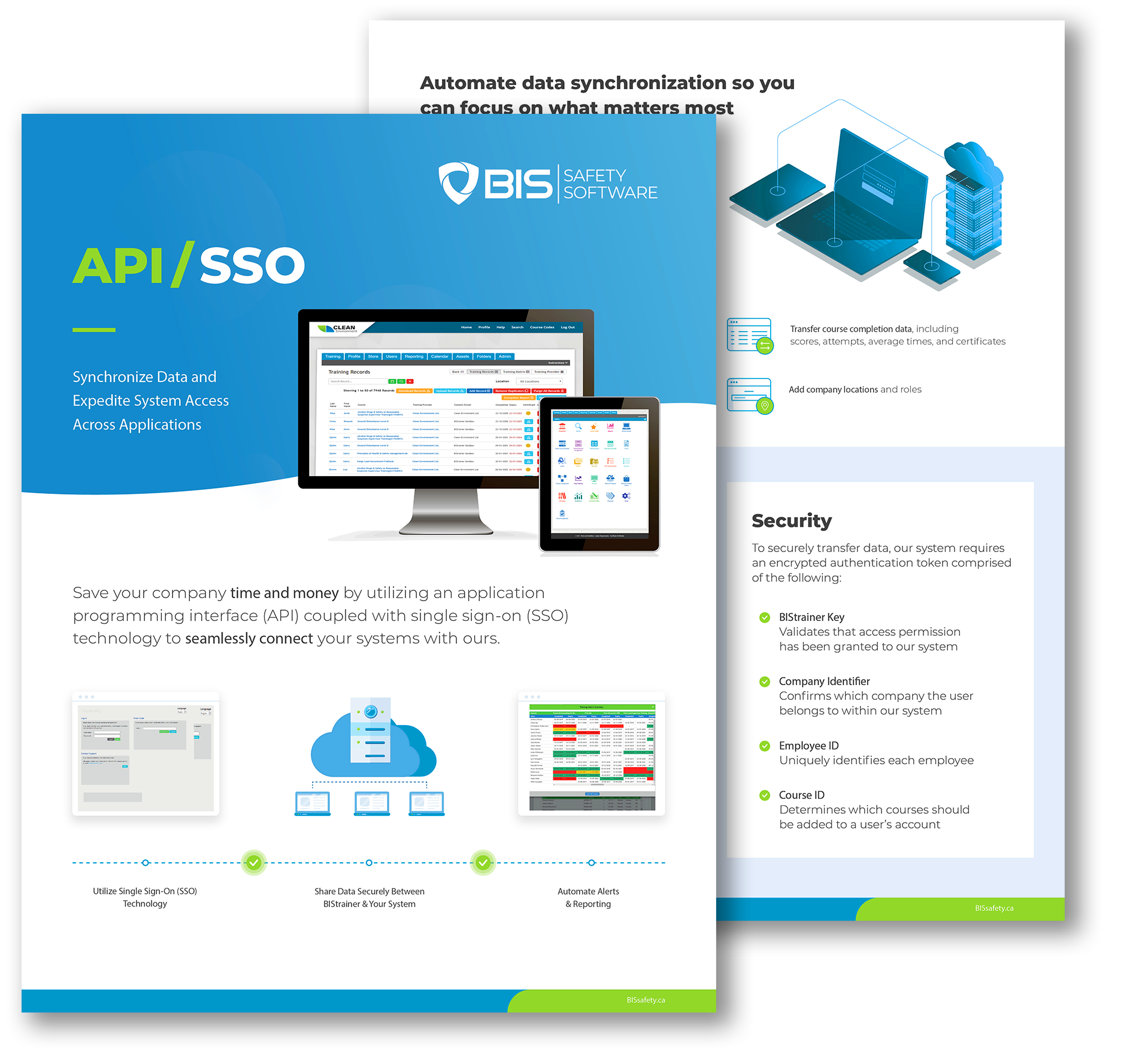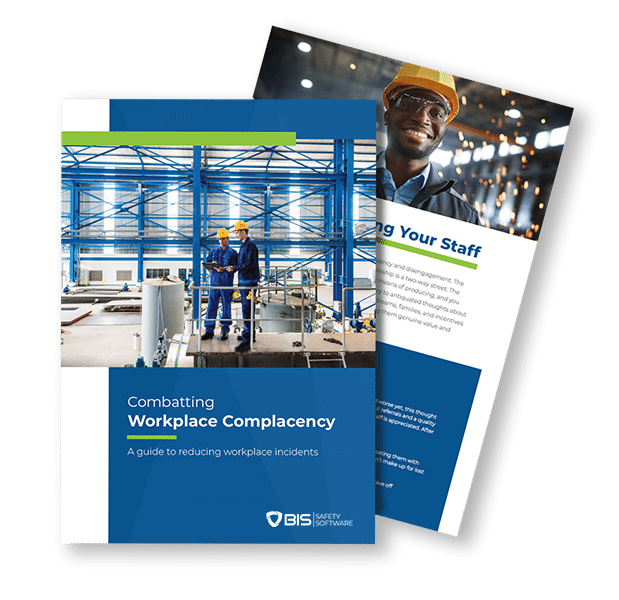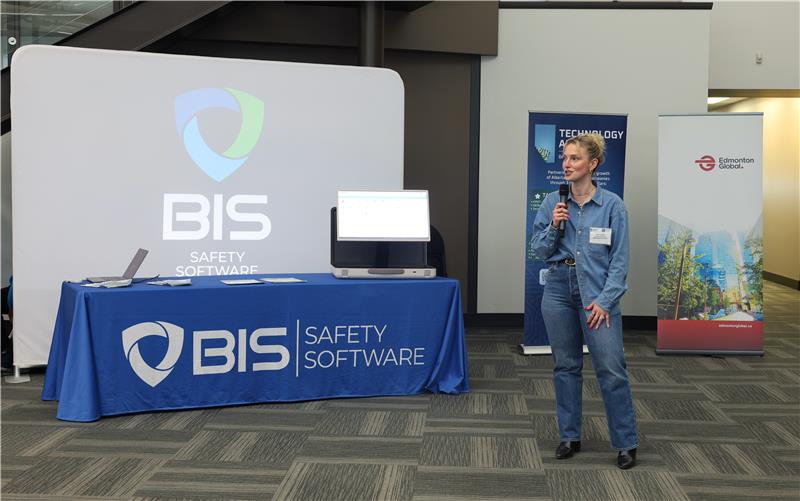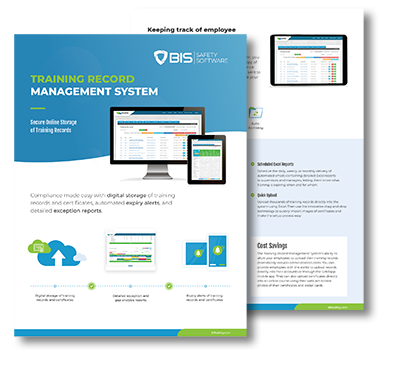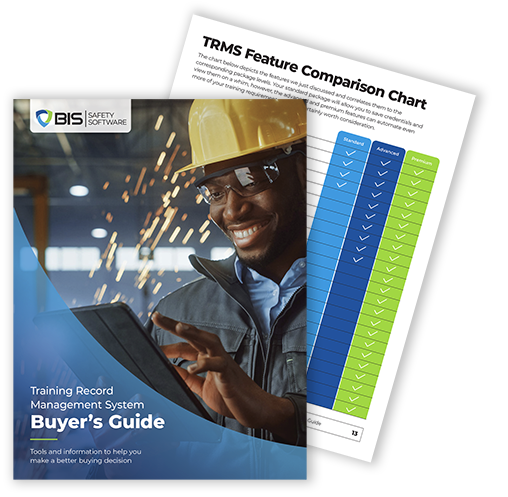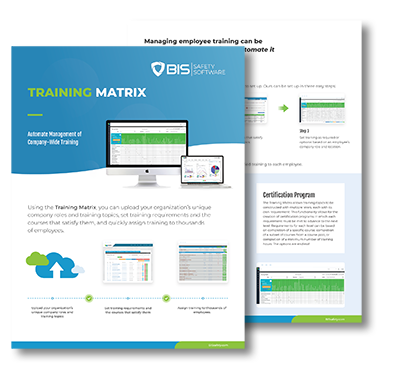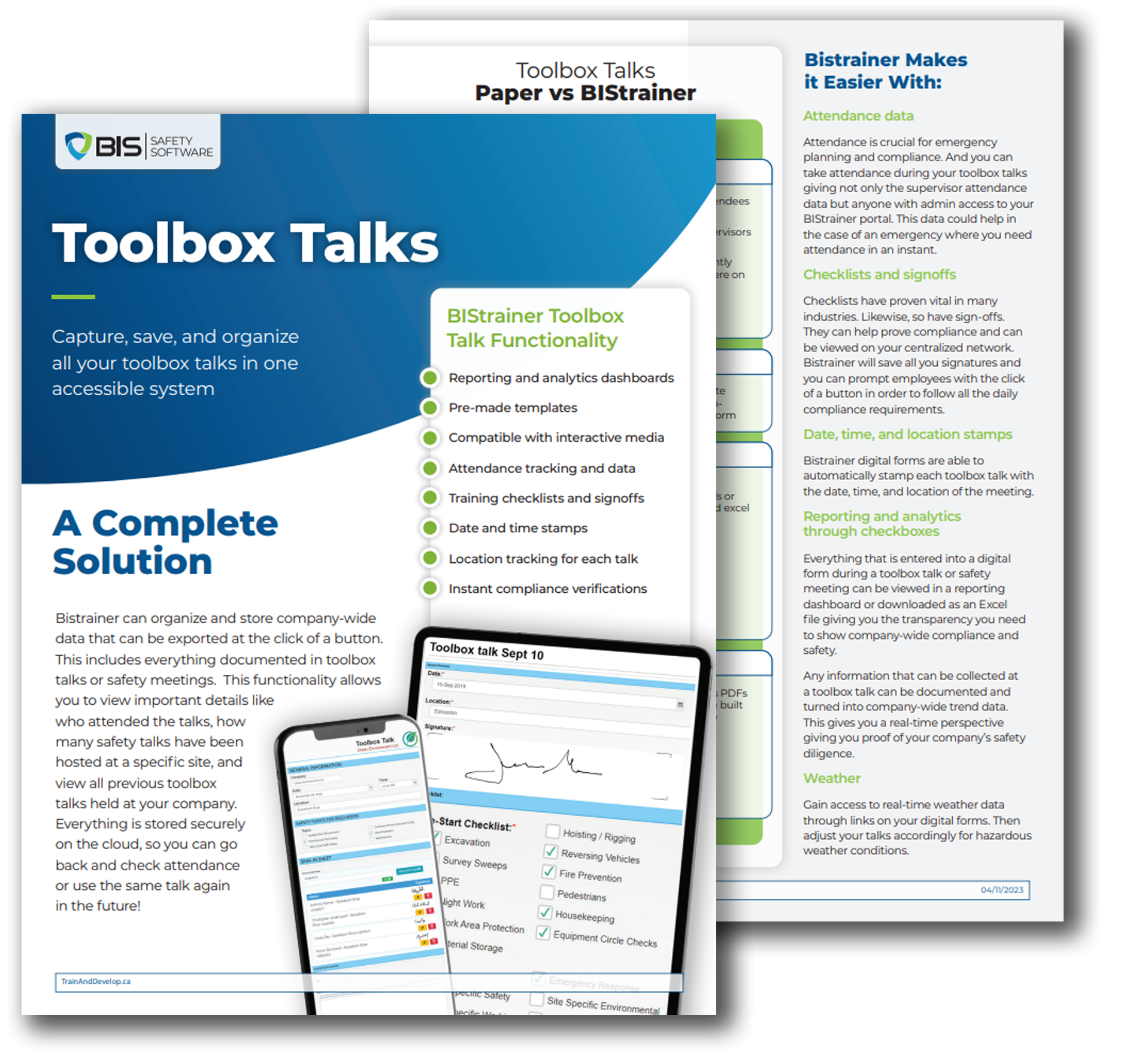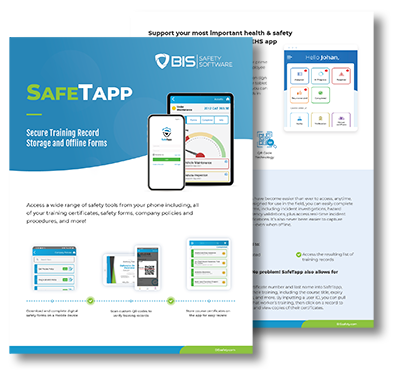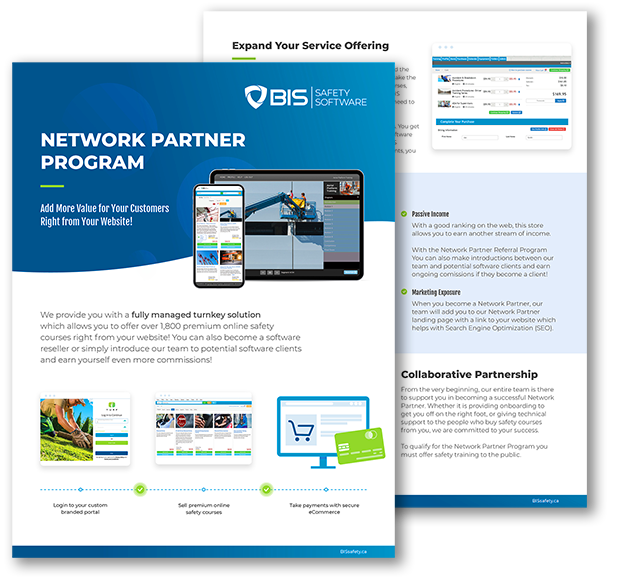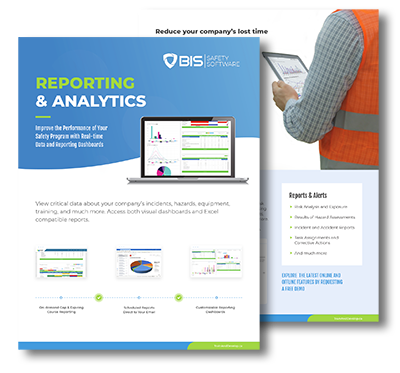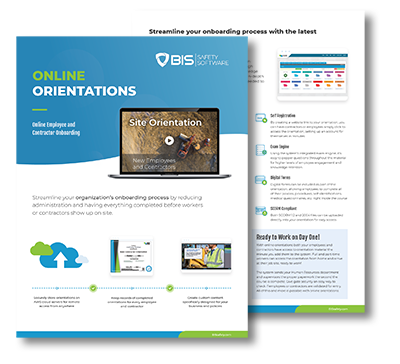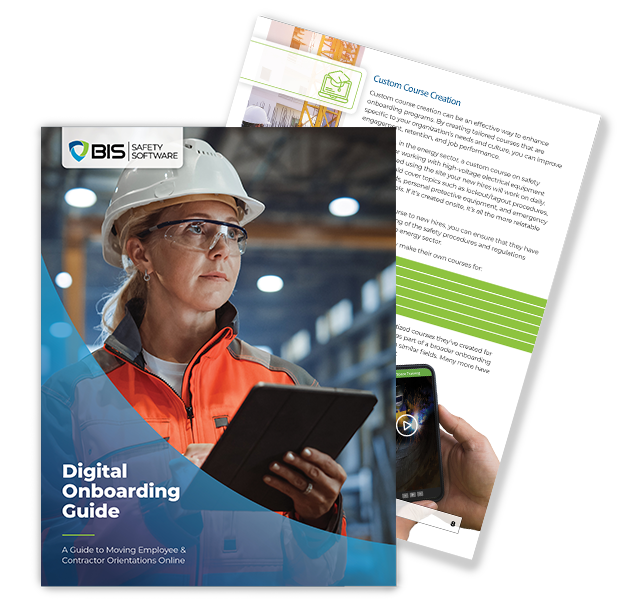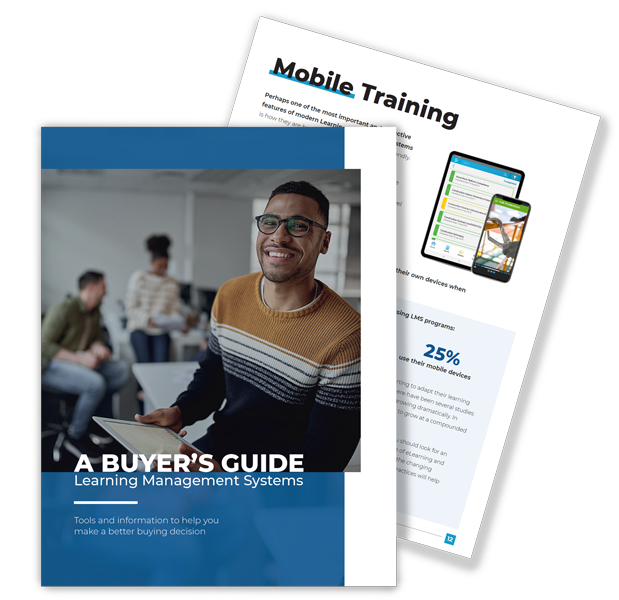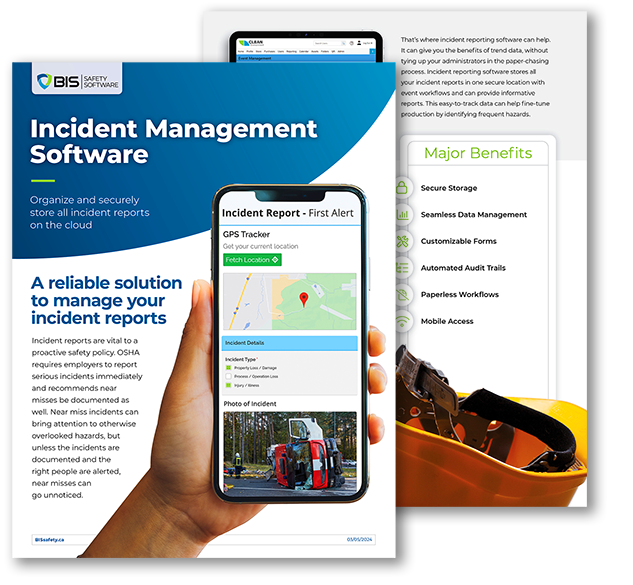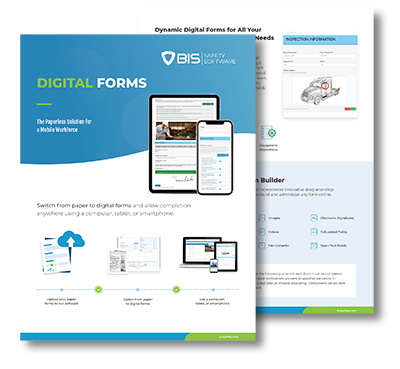Pipeline Construction Safety Training
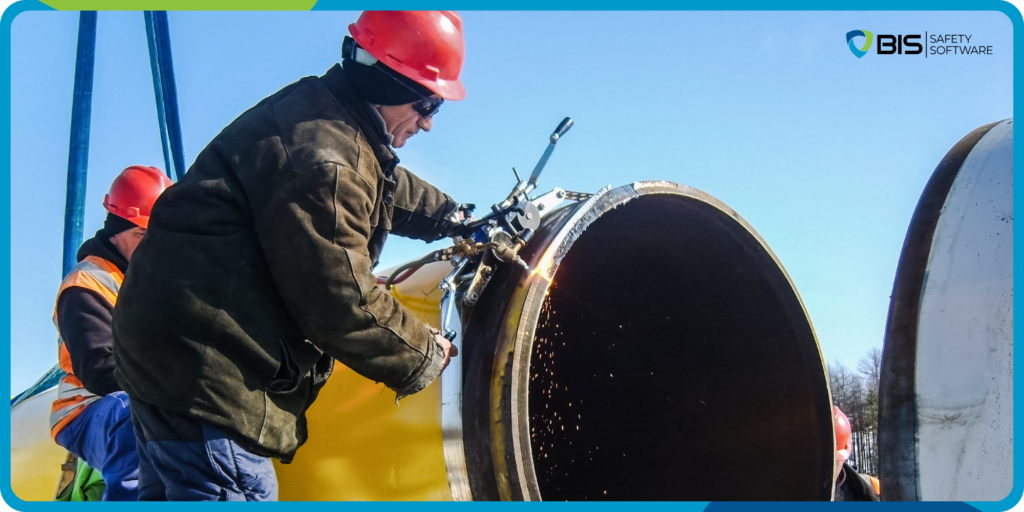
Home Blog Pipeline Construction Safety Training Essential Knowledge for Workers Enroll today! By Jennah Mitchell Facebook Twitter LinkedIn Pipeline construction plays a vital role in transporting oil and natural gas efficiently and safely. However, building and maintaining these pipelines comes with significant hazards that can put workers, the environment, and the surrounding communities at risk. Proper training ensures that every worker understands the best safety practices, potential hazards, and industry regulations. The Pipeline Construction Safety Training (PCST) course provides comprehensive knowledge on hazard identification, risk mitigation, and safe construction techniques. This training ensures workers can perform their jobs safely and effectively. Upon completion, participants receive a QR Code-enabled certificate for quick verification of their credentials. Why Pipeline Construction Safety Training Matters Pipeline construction involves heavy machinery, hazardous materials, and complex processes. Without the proper training, workers face risks such as falls, equipment-related injuries, chemical exposure, and fire hazards. A well-trained workforce helps to: ✔ Prevent accidents and injuries on-site ✔ Ensure compliance with safety regulations ✔ Reduce costly delays caused by safety violations ✔ Protect the environment from contamination risks ✔ Improve communication and teamwork among workers What’s Covered in Pipeline Construction Safety Training? 1. Understanding Pipeline Construction Processes ✔ Overview of pipeline construction steps ✔ Surveying, trenching, and laying pipelines ✔ Welding, coating, and non-destructive testing ✔ Backfilling, pressure testing, and reclamation 2. Recognizing Common Hazards ✔ Working around heavy equipment and vehicles ✔ Uneven terrain and trench-related risks ✔ Exposure to hazardous chemicals and gases ✔ Lockout/Tagout (LOTO) procedures for hazardous energy ✔ Overhead power line safety 3. Fire Prevention and Emergency Preparedness ✔ Fire hazard identification and prevention strategies ✔ Fire extinguisher types and proper use (PASS method) ✔ Emergency response procedures for spills and incidents ✔ Safe handling of flammable materials 4. Personal Protective Equipment (PPE) and Safe Practices ✔ Selecting and using the right PPE for pipeline work ✔ Importance of eye, hand, foot, and respiratory protection ✔ Best practices for avoiding workplace injuries ✔ Safety protocols for working in remote locations Get Certified Today! Pipeline construction requires specialized knowledge and adherence to strict safety standards. The Pipeline Construction Safety Training (PCST) course provides workers with the essential skills to work safely, prevent accidents, and ensure compliance with industry regulations. Participants will receive a QR Code-enabled certificate for verification. Enhance your safety knowledge—[Enroll in Pipeline Construction Safety Training Today]! BIS Social Media Follow BIS Safety Software for industry-leading safety updates, training solutions, and more. Hover over each icon for quick access to follow, share, or explore our other channels. Facebook Instagram Linkedin Youtube Related Articles All Posts 360 Immersive 360immersive accident prevention accidental careers adjustable workstations adult education AI automation AI implementation AI in business AI in operations AI in Safety AI podcast AI strategy AI transformation Alberta safety courses Allan James Moore artificial intelligence asking for help audit readiness automation in safety automation strategy avoidable injuries awareness Aztec Safety back strain BambooHR integration behavior-based safety Behavioral Safety biometric sensors BIS Podcast BIS Safety Software BIS Safety Spotlight black holes BP Texas City Explosion Brave Leadership Brett Burkard burnout business automation Canadian safety history Canadian safety standards carbon monoxide Carolynne Heron CCOHS chemical chemical vapors chronic injuries chronic pain cloud-based safety tools Coming Soon community safety programs Competency in Safety complacency in safety Compliance compliance courses compliance tools compliance vs protection Construction advocacy Construction education Construction industry construction safety construction safety training continuous improvement continuous safety improvement corporate culture crane Customer Spotlight Customer Spotlight Kevin Swinden Global Hazmat Safety Culture Hazmat Management Dangerous Goods Competency in Safety Workplace Risk Mitigation BIS Training Clients Canadian EHS customized training daily trip inspection Damage Prevention Dangerous Goods dangerous goods classification Danny Sellers data-driven safety defensive driving digital compliance digital forms digital safety tools digital safety transformation digital transformation DMS features document control document management system Dr. Joanna Pagonis driver file management driver training driving instructor program DTRMS e-learning early intervention education technology EHS EHS digital solutions Einstein electrical safety emergency preparedness emergency response emergency supplies emotional training employee behavior employee engagement employee health employee safety employee training ergonomic consulting ergonomic design ergonomic risks ergonomics evidence collection EWI Works exoskeleton exoskeletons fall protection field experience field safety field safety services fire prevention first aid kit first week on the job first workplace injury fleet management fleet safety freight frontline safety future of work Global Hazmat gravitational waves hand injuries handling hazardous materials hands-on training Hazard Awareness hazard communication hazard prevention hazard recognition Hazmat Management Health & Safety Podcast health and safety hearing loss prevention hearing protection heavy equipment safety hidden workplace hazards high voltage systems HR automation HR software human factors human in the loop human vs machine human-centered design human-centered safety humor in safety ICBC certification immersive learning Imposter Syndrome incident data incident investigation incident prevention incident reporting industrial AI Industrial Hygiene industrial safety Infrastructure Risk injury consequences injury prevention injury prevention tips injury recovery injury reporting injury response injury response plan instructor development internal audits invisible dangers Jeff Mulligan Jennifer Lastra job site accountability job site hazards job site risks job site safety Jody Young KBR Safety Training Kevin Swinden labor movement ladder safety Leadership leadership accountability leadership and empathy learning from incidents lifting techniques LIGO Linda Miller LMS lockout tagout lone workers machine learning mental health at work MI Safety Mike Schwartz minor injuries movement in workplace MyZone AI new workers no-blame investigations noise exposure Northern BC NRCA NSC Standard 13 occupational fatigue occupational hazards occupational health occupational safety occupational therapy OH&S OHS OHSA oil and gas safety omni-training onboarding safety Online safety training operational efficiency organizational culture organizational safety OSHA compliance OSHA standards outdated practices overconfidence overhead crane courses pain awareness personal protective equipment Pharmaceutical Safety physics careers pipeline safety podcast post-accident review post-incident protocol PPE PPE enforcement PPE improvement pre-trip inspection predictive analytics pretrip inspection proactive safety proactive safety measures. Professional development protective clothing psychological hazards psychological safety real-time safety recordkeeping regulatory updates repetition in safety repetitive motion injuries respirator safety respirators risk
Daily Trip Inspection Training

Home Blog Daily Trip Inspection Training Ensuring Vehicle Safety Before Every Drive Enroll today! By Divyanshu Jain Facebook Twitter LinkedIn Daily trip inspections are a critical safety measure for commercial drivers and fleet operators. A thorough inspection helps identify potential issues before they lead to accidents, vehicle breakdowns, or regulatory violations. Under NSC Standard 13, drivers must perform these inspections at least every 24 hours, ensuring their vehicles are in safe operating condition. The Daily Trip Inspection Training course equips drivers with the knowledge needed to conduct thorough pre-trip inspections, recognize defects, and comply with regulatory standards. Upon completion, participants receive a QR Code-enabled certificate for instant verification. Why Daily Trip Inspections Matter Routine inspections are required by law and play a crucial role in preventing accidents. A proper trip inspection helps drivers: ✔ Identify mechanical defects before they cause failures ✔ Ensure compliance with NSC Standard 13 ✔ Enhance road safety for themselves and others ✔ Reduce costly repairs and vehicle downtime ✔ Prevent fines and penalties for non-compliance What’s Covered in Daily Trip Inspection Training? 1. Understanding NSC Standard 13 ✔ Overview of daily trip inspection regulations ✔ Responsibilities of drivers and fleet operators ✔ Consequences of skipping inspections ✔ Fines, penalties, and enforcement measures 2. Pre-Trip Inspection Procedures ✔ How to conduct a systematic vehicle inspection ✔ Required documentation and reporting ✔ Identifying minor vs. major defects ✔ Communicating issues to employers and maintenance teams 3. Key Inspection Areas ✔ Cab and dashboard components (lights, gauges, steering, brakes, seatbelts) ✔ Walkaround inspection (mirrors, doors, tires, fuel tank, exhaust system) ✔ Air brake system checks (if applicable) ✔ Cargo and load securement 4. Handling Defects and Compliance ✔ How to recognize common defects and safety risks ✔ Steps to take when identifying a major defect ✔ Reporting defects and arranging for repairs ✔ Keeping accurate logs and inspection records Get Certified Today! Daily trip inspections are essential for road safety, regulatory compliance, and vehicle longevity. The Daily Trip Inspection Training course ensures drivers are equipped to conduct thorough inspections, document defects, and operate vehicles safely. Participants will receive a QR Code-enabled certificate for quick verification. Start your journey towards safer driving—[Enroll in Daily Trip Inspection Training Today]! BIS Social Media Follow BIS Safety Software for industry-leading safety updates, training solutions, and more. Hover over each icon for quick access to follow, share, or explore our other channels. Facebook Instagram Linkedin Youtube Related Articles All Posts 360 Immersive Alberta safety courses awareness BambooHR integration biometric sensors BIS Safety Software black holes chemical chronic injuries community safety programs Compliance compliance courses compliance tools compliance vs protection Construction advocacy Construction education Construction industry construction safety training crane customized training daily trip inspection Danny Sellers data-driven safety digital forms driver file management driver training early intervention EHS Einstein emergency preparedness emergency supplies employee health employee safety employee training ergonomics exoskeletons fall protection field safety field safety services fire prevention first aid kit first week on the job fleet management gravitational waves hands-on training hazard communication hazard prevention heavy equipment safety high voltage systems HR automation HR software incident data incident reporting industrial safety injury prevention injury reporting injury response internal audits Jennifer Lastra job site hazards job site risks job site safety Jody Young KBR Safety Training Leadership leadership accountability LIGO LMS lone workers mental health at work MI Safety new workers Northern BC NRCA NSC Standard 13 occupational health occupational safety oil and gas safety onboarding safety Online safety training OSHA compliance OSHA standards overhead crane courses pain awareness physics careers pipeline safety PPE PPE enforcement pre-trip inspection pretrip inspection Professional development psychological safety risk management road safety Robin Postnikoff safety safety advice safety article safety best practices safety compliance safety culture safety innovation safety insights safety inspection safety leadership safety management safety management system safety myths safety systems safety technology safety theater safety tips safety training smart helmets space science supervisor training Total Recordable Injury Formula training training courses training matrix training record management transportation vehicle safety Virtual Reality VR Technology wearable technology WHMIS women in leadership work-alone training worker accountability worker protection worker safety workforce management workforce training workplace best practices workplace certification workplace hazards workplace health workplace injury prevention workplace risk management Workplace safety workplace wellness WSPS Transportation Safety Week Offers April 11, 2025 Transportation Safety Week is the perfect time to boost driver safety. Get 3 months free access to top training courses… Read More The LMS Buyer’s Guide: April 11, 2025 Choosing the right LMS can transform your training, compliance, and employee development. This guide highlights key factors to help you… Read More Comprehensive Guide to EHS Risk Management Software April 10, 2025 This guide helps you choose the best EHS risk management software by covering features, vendor selection, implementation strategy, and long-term… Read More
BambooHR & BIS
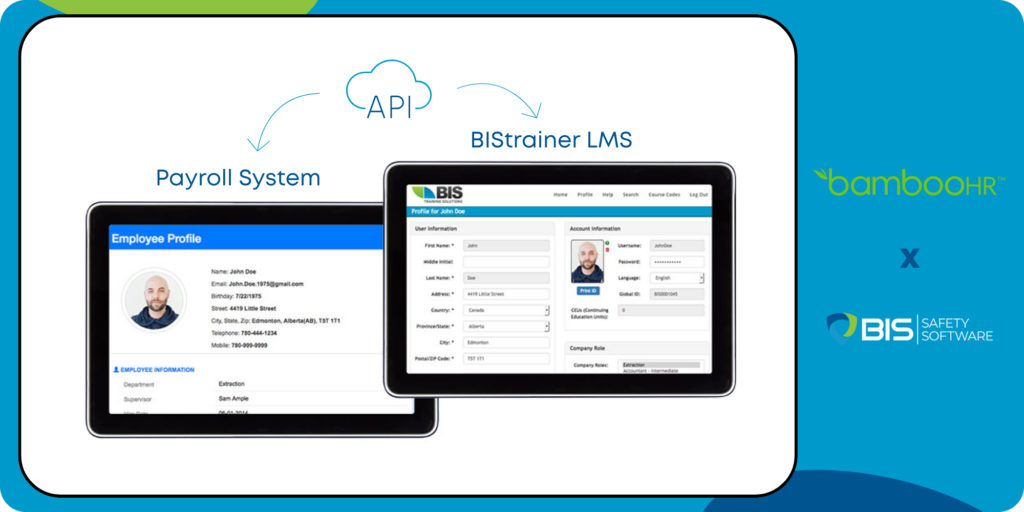
BambooHR & BIS Simplifying HR and Safety Management Together at last! By Divyanshu Jain Facebook Twitter LinkedIn Exciting news! BambooHR is now fully integrated with BIS Safety Software. Companies are already using BambooHR for hiring, onboarding, and employee management. Now they can seamlessly connect their HR data with safety training and compliance tracking. Eliminate double data entry, reduce errors, and save valuable time. For businesses that balance both HR and safety compliance, this integration means smoother workflows, better data accuracy. It means a stronger overall system for managing employees — from their first day to their next certification renewal. Why BambooHR? BambooHR is built for companies that want an easy, intuitive HR platform. It streamlines hiring, onboarding, time tracking, benefits, and performance management. But what it doesn’t handle natively is workplace safety training and compliance management—critical for industries with regulatory requirements. That’s where the integration with BIS Safety Software comes in. By linking BambooHR with BIS Safety Software, businesses can keep all employee information in sync. No more manual data entry. No more worrying about outdated records. Just one system, updated automatically, working together to keep HR and safety teams aligned. How Integration Works BambooHR’s integration is simple. BambooHR acts as the central hub for employee data. BIS Safety Software ensures that training records, certifications, and compliance details stay updated. Here’s how it works at a high level: 1. Automatic Data Sync When a new employee is added to BambooHR, their information is automatically pushed to BIS Safety Software—no need to enter the same details twice. 2. Training and Certification Tracking As employees complete training, their records update in BIS Safety Software and sync back to BambooHR. This ensures HR teams always have the latest compliance status. 3. Seamless Offboarding When an employee leaves, their records are removed from both systems, preventing outdated information from lingering and streamlining audits. 4. Real-Time Updates When a new employee is added to BambooHR, their information is automatically pushed to BIS Safety Software—no need to enter the same details twice. The result? A fully connected system where HR and safety management work hand in hand, making sure employees are trained, compliant, and always up to date. The Benefits for Customers For businesses juggling HR responsibilities and safety compliance, this integration is a game-changer. Here’s what it means in practice: 1 No More Double Entry HR teams won’t have to enter employee data into two different systems. Save time and reduce the risk of errors. 2 Always Up-to-Date Compliance Records When training or certifications expire, HR teams get real-time updates, preventing compliance gaps. 3 Faster Onboarding New employees can be automatically assigned training based on their role. This ensures they meet safety requirements from day one. 4 Better Workforce Insights With HR and safety data in one place, companies get a clearer picture of their workforce’s readiness and compliance. 5 Simplified Audits When auditors come knocking, HR and safety teams can pull up accurate, real-time records in seconds—no scrambling, no searching. A Smarter Way to Manage HR and Safety The integration between BambooHR and BIS Safety Software brings together the best of both worlds. It keeps HR teams focused on people. It keeps safety teams focused on compliance. It keeps employees moving through their training and career milestones without friction. For companies looking to simplify their HR and safety processes, this is the kind of efficiency that makes a difference. Save time, reduce risk, and ensure a safer, more compliant workforce. One system, two essential functions—finally working together the way they should. BIS Social Media Follow BIS Safety Software for industry-leading safety updates, training solutions, and more. Hover over each icon for quick access to follow, share, or explore our other channels. Facebook Instagram Linkedin Youtube Related Articles All Posts 360 Immersive Alberta safety courses Allan James Moore awareness BambooHR integration biometric sensors BIS Podcast BIS Safety Software black holes Brave Leadership chemical chronic injuries Coming Soon community safety programs Compliance compliance courses compliance tools compliance vs protection Construction advocacy Construction education Construction industry construction safety training crane customized training daily trip inspection Danny Sellers data-driven safety digital forms Dr. Joanna Pagonis driver file management driver training early intervention EHS Einstein emergency preparedness emergency supplies employee health employee safety employee training ergonomics exoskeletons fall protection field safety field safety services fire prevention first aid kit first week on the job fleet management frontline safety gravitational waves hands-on training hazard communication hazard prevention Health & Safety Podcast heavy equipment safety high voltage systems HR automation HR software humor in safety Imposter Syndrome incident data incident reporting industrial safety injury prevention injury reporting injury response internal audits Jennifer Lastra job site hazards job site risks job site safety Jody Young KBR Safety Training Leadership leadership accountability leadership and empathy LIGO LMS lone workers mental health at work MI Safety new workers Northern BC NRCA NSC Standard 13 occupational health occupational safety oil and gas safety onboarding safety Online safety training OSHA compliance OSHA standards overhead crane courses pain awareness physics careers pipeline safety podcast PPE PPE enforcement pre-trip inspection pretrip inspection Professional development psychological safety risk management road safety Robin Postnikoff safety safety advice safety article safety best practices safety communication safety compliance Safety Conversations safety culture safety innovation safety insights safety inspection Safety Leaders safety leadership safety management safety management system safety metrics safety myths safety podcast Safety Spotlight safety systems safety technology safety theater safety tips safety training Sinogap Solutions smart helmets space science supervisor training Total Recordable Injury Formula training training courses training matrix training record management transportation Trust and Accountability vehicle safety Virtual Reality VR Technology wearable technology WHMIS women in leadership work-alone training worker accountability worker protection worker safety workforce management workforce training workplace best practices workplace certification Workplace Culture workplace hazards workplace health workplace injury prevention workplace risk management Workplace safety workplace safety culture workplace wellness WSPS Party Crashing the Safety Status Quo: Allan James Moore on Redefining Safety Leadership April 22, 2025 In this Safety Spotlight episode, Allan
Virtual Reality, Real Safety

Home Blog Virtual Reality, Real Safety Jennifer Lastra’s Mission to Save Lives Lastra talks psychology, VR, and AI in workplace training. By Luke Hillenbrand Facebook Twitter LinkedIn “Compliance doesn’t equal competence. We have to do better.” Jennifer Lastra started her career as an electrician in the US Navy. She spent years working in shipbuilding and manufacturing as boots on the ground. She worked as a contractor in shipyards, frequently operating in high-risk environments with minimal supervision. This was real work, alongside people who did dangerous jobs every day. Then she saw the gaps—massive gaps in how safety was taught, understood, and retained. “I didn’t even realize how unsafe shipboard construction was until years later. The challenges go beyond just the hazards of working with electricity inside a steel vessel floating on water. And yet, we weren’t taught about self-awareness or situational awareness the way we should have been. We were just thrown in.” Jennifer Lastra Today, Lastra is on a mission to change that. As the Co-Founder and CEO of 360 Immersive, she’s pioneering the use of virtual reality (VR) in safety training. Her firm creates deeply immersive experiences. This is training that forces workers to engage, react, and remember. Her philosophy is simple: traditional training isn’t working. And if the fatality rates prove anything, it’s that the industry is long overdue for disruption. From the Navy to Night Vision to VR After the Navy, Lastra moved into shipbuilding. After that — manufacturing, making night vision goggles for military and emergency responders. She loved the sense of service—helping those who protect others. But eventually, she felt the pull to do something on her own. She wanted to build something. And in 2014, she saw her opportunity: virtual reality. “We started being able to pair cell phones with VR viewers,” she says. “Even if it was just cardboard headsets, I knew this technology had the power to completely immerse someone. And if you can immerse them, you can have the ability to modify their behavior.” Jennifer Lastra But Lastra isn’t a tech person. She never set out to be one. What drew her in wasn’t the hardware—it was the potential. “It was the perfect storm,” she says. “Entrepreneurship, powerful technology, and the chance to fix something I knew was broken.” She took that vision and started building. At first, there were skeptics. Some dismissed VR as a gimmick, a novelty. But as more companies saw the results, they realized she was onto something. “When workers go through VR training, they retain more. They react faster. They make better decisions under pressure,” she says. “It’s not theory—it’s science.” Related read: Do you own a business in the insurance industry? Check out how Artificial Intelligence is transforming the insurance industry. Fixing the Gaps in Safety Training For Lastra, the problem with traditional safety training is that it’s passive. Workers sit through hours of slide decks, printed manuals, and video lectures. They check a box, take a test, and move on. But does any of it stick? “Most safety training today is outdated and ineffective,” she says. “We’re giving workers information, but we’re not engaging them. And when the moment comes—when they’re in a real situation—what do they actually remember?” She experienced the challenge firsthand early in her career. As someone with dyslexia, she struggled to translate technical training into real-world applications. “I could pass any test you threw at me,” she says. “But when I got to the fleet, I had no idea how to apply it.” That disconnect drives her work today. 360 Immersive doesn’t just build training programs—it builds experiences. Using VR, workers are placed in hazardous environments. They react, make decisions, and see the consequences of those decisions play out in real time. “The goal is to meet learners where they are,” she says. “a scenario they’ll never forget. ”Some people learn best through reading, others hands-on, or a combination of both. VR bridges the gap, blending learning styles creating a more effective, engaging, and memorable experience.” And it’s not just about skill development. VR can replicate real-life pressures. Confined spaces, operating machinery under stress, reacting to an unexpected hazard. VR goes beyond technical skills – it’s ideal for simulating low-incident, high-risk scenarios like confined space rescues or warehouse fires, where mistakes have cost lives. “It’s a powerful tool for developing decision-making and critical thinking skills without actual consequences,” Lastra says. “The emotional connection makes training unforgettable and deeply impactful.” The Next Big Fight: Psychological Safety For Lastra, safety training isn’t just about hazard recognition and compliance – it’s about mindset. She believes psychological safety is the most overlooked factor in workplace safety. “Early in my career, I was often the first – or only – woman on the team, which made me feel like an outsider. I didn’t feel safe enough to raise my hand or ask questions. How many people still face this same challenge today?” She argues that fear prevents workers from speaking up about unsafe conditions – fear of asking a “stupid” question, fear of retaliation, fear of rejection. “People don’t speak up if they don’t feel like they belong. If they don’t feel safe,” she says. Her approach integrates psychological safety, mindfulness, and situational awareness into safety training. Instead of just teaching PPE regulations, we have an opportunity to dig deeper to understand, ‘Why aren’t you wearing it?’ or ‘Why did you skip inspecting it?’ Maybe it didn’t fit, or they were rushing to finish a task. Powerful storytelling in VR goes beyond compliance by illustrating the root causes of unsafe behaviors. By immersing learners in realistic, relatable scenarios, they build self-awareness, confidence, and the ability to speak up, take responsibility, and make safer decisions – key elements of a psychologically safe workplace. “If we can create emotional connections to training, we can change behavior. That’s the missing piece.” Jennifer Lastra The Fight for Better Standards Lastra isn’t just battling outdated training methods—she’s fighting complacency. “While yearly numbers fluctuate, the overall trend of workplace
Safety Myths
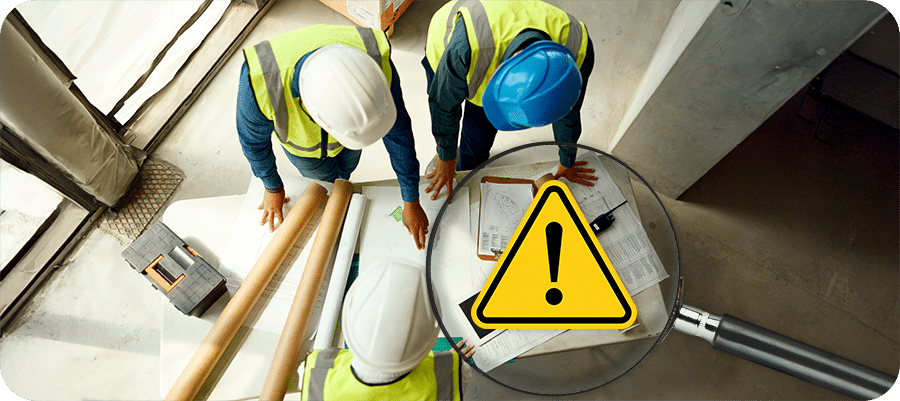
Home Blog Safety Myths And Which Ones Need to Die! Does your workplace suffer from ‘fakelore’? By Luke Hillenbrand Facebook Twitter LinkedIn Some workplace safety “truths” have been passed down for years—but that doesn’t make them right. In fact, some of the most common safety beliefs are flat-out dangerous. It’s time to call them out before they get someone hurt. Here are some of the biggest myths that need to be put to bed: 1. “We’ve Always Done It This Way, and It’s Been Fine” Why it’s dangerous: Just because it worked before doesn’t mean it’s safe now. The fix: Regularly review procedures and update them based on new technology and best practices. Just because something hasn’t caused an accident yet doesn’t mean it won’t. Luck is not a safety strategy. Every shortcut taken without consequence is just stacking the odds against you. The right way to do something is the safe way—not just the way it’s always been done. This myth is especially dangerous because it resists change. New technology, updated regulations, and evolving best practices exist for a reason. Sticking to outdated methods means ignoring safer, more efficient ways to work. It’s only a matter of time before that “tried and true” approach fails in a catastrophic way. ————————————————————————— “People with [differing] attitudes or inexperience think they can cut corners, but it will catch up with them eventually. It’s just like running stop signs—you might get away with it for a while, but sooner or later, disaster strikes.” Robin Postnikoff ————————————————————————— 2. “More PPE Means More Safety” Why it’s dangerous: Too much PPE can reduce mobility and create new hazards. The fix: Use the hierarchy of controls—eliminate hazards first, then rely on PPE as a last line of defense. PPE is essential, but it’s not a magic shield. Wearing thick gloves while handling tiny components can reduce grip and increase risk. Heavy gear in hot conditions can lead to heat exhaustion. Safety starts with eliminating hazards—not just piling on more protective equipment. The key is the hierarchy of controls. Remove the hazard first. Substitute safer alternatives. Install engineering or administrative controls before relying solely on PPE. Workers need the right protection, not just more protection. ————————————————————————— “Sometimes, extreme PPE requirements actually cause more problems. We had sites where tying off at two steps was mandatory, but workers were tripping over their harness cords. It wasn’t reasonable, and people got hurt because of it.” Brett Burkard ————————————————————————— 3. “A Quick Task Doesn’t Need Full Safety Precautions” Why it’s dangerous: Accidents happen in seconds, especially when rushing. The fix: Treat every task—no matter how small—as an opportunity to follow proper safety procedures. The worst accidents happen when people skip safety steps “just for a second.” It only takes a moment for a fall, a fire, or an amputation to happen. No job is too small for safety. Related read: Do you own a business in the insurance industry? Check out how Artificial Intelligence is transforming the insurance industry. ————————————————————————— “Every rule has been written in blood. People don’t take things seriously until someone gets hurt or a company gets sued. That’s why we drill safety into training—it has to stick before something bad happens.” Robin Postnikoff ————————————————————————— 4. “If It’s Not an Injury, It’s Not a Big Deal” Why it’s dangerous: Near misses are warnings that something is wrong. The fix: Investigate and correct all near misses before they turn into serious accidents. Near misses are flashing warning signs. Ignoring them guarantees that next time, someone will get hurt. Treat close calls like actual incidents—investigate, correct, and learn from them. In industries like construction and manufacturing, near misses are often precursors to severe accidents. A worker who trips but doesn’t fall today might break a leg tomorrow. A machine that jams without consequence today might lead to an amputation next week. Reporting and addressing near misses prevent tragedies. 5. “Good Workers Don’t Need Safety Training” Why it’s dangerous: Experience can lead to overconfidence and complacency. The fix: Make regular safety training mandatory for all employees, no matter their experience level. Experience doesn’t make anyone invincible. In fact, veteran workers are often the ones who get complacent. Training isn’t just for rookies—it’s for everyone, all the time. ————————————————————————— “I don’t care if you have a master’s degree in safety. If you don’t have the experience, the network, and the mindset to keep learning, you’re not going to be a good safety person. Training is never just a ‘one and done.” Kevin Swinden ————————————————————————— 6. “Slower Work Is Safer Work” Why it’s dangerous: Moving too slowly can cause inefficiencies and increase risk. The fix: Focus on smart work—trained, controlled, and precise—rather than just slow work. Rushing is dangerous, but moving at a crawl isn’t the answer either. Safety is about working smart, not just slow. Proper training and good procedures allow workers to be both safe and efficient. Think about high-risk jobs like firefighting or emergency response. Speed is necessary, but it’s trained, controlled, and precise. The same applies to workplaces. Efficiency and safety go hand in hand when workers follow procedures correctly. 7. “Only High-Risk Jobs Require Safety” Why it’s dangerous: Every workplace has risks, even offices. The fix: Promote workplace-wide safety initiatives. That includes ergonomics, mental health, and general hazard awareness. Office workers don’t wear hard hats, but that doesn’t mean they’re risk-free. Ergonomics, air quality, mental health, and electrical hazards all pose serious threats in lower-risk jobs. Safety applies everywhere. ————————————————————————— “Workplace safety is expanding beyond just physical hazards. We’re seeing a shift in how mental well-being is incorporated into safety culture, and that’s a game-changer.” Lisa Rantucci ————————————————————————— 8. “Accidents Just Happen” Why it’s dangerous: Almost all workplace accidents are preventable. The fix: Build a proactive safety culture where workers feel responsible for identifying and addressing hazards. No, they don’t. Almost every workplace accident is preventable. Ignoring risks, skipping procedures, and relying on luck is a choice—and it’s a bad one. ————————————————————————— “I’ve seen companies turn their
Would You Bet Your Paycheck on Safety?

Home Blog Would You Bet Your Paycheck on Safety? That Need to Die By Luke Hillenbrand Facebook Twitter LinkedIn Imagine this: At the end of every shift, you had to bet your entire paycheck that nobody on your crew got hurt. Would you do anything differently? Would you double-check your PPE? Would you remind a co-worker to use a harness? Would you take that extra second to secure a load or test a machine lockout? The truth is, whether you realize it or not, you are betting on safety every day. The stakes aren’t just money—they’re your health, your reputation, and your future. One bad decision, one shortcut, one ignored hazard, and you could lose everything. Safety is More Than a Rule—It’s a Wager Most people wouldn’t gamble their paycheck on pure luck. But every time someone skips a step, assumes a risk, or rushes a job, they’re rolling the dice. Sometimes they win—nothing happens. Other times? That bet costs them weeks of lost wages, medical bills, or a permanent injury. Think about it: A mechanic skips wearing gloves because “it’s just a quick fix.” That quick fix leads to stitches and time off work. A forklift operator speeds up to finish early. One wrong turn leads to a collision—and unemployment. A roofer skips fall protection “just for a second.” That second changes their life forever. Key Takeaways Lorem Ipsum is simply dummy text of the printing and typesetting industry. Lorem Ipsum has been the industry’s standard dummy text ever since the 1500s, when an unknown printer took a galley of type and scrambled it to make a type specimen book. It has survived not only five centuries, but also Lorem Ipsum is simply dummy text of the printing and typesetting industry. Lorem Ipsum has been the industry’s standard dummy text ever since the 1500s, when an unknown printer took a galley of type and scrambled it to make a type specimen book. It has survived not only five centuries, but also Lorem Ipsum is simply dummy text of the printing and typesetting industry. Lorem Ipsum has been the industry’s standard dummy text ever since the 1500s, when an unknown printer took a galley of type and scrambled it to make a type specimen book. It has survived not only five centuries, but also Lorem Ipsum is simply dummy text of the printing and typesetting industry. Lorem Ipsum has been the industry’s standard dummy text ever since the 1500s, when an unknown printer took a galley of type and scrambled it to make a type specimen book. It has survived not only five centuries, but also The House Always Wins Casinos are designed so that, over time, the house always wins. Unsafe work habits work the same way. Maybe you’ve skipped safety steps before and nothing happened. Maybe you’ve seen others take risks and walk away fine. That’s like winning a few hands in a row—it feels good, but the odds will catch up eventually. Complacency is the biggest con of all. The more times a worker gets away with a risk, the more confident they become in their luck. But luck runs out. And when it does, the price is steep. Related read: Do you own a business in the insurance industry? Check out how Artificial Intelligence is transforming the insurance industry. How to Play It Safe (and Win Every Time) 1. Be Smart Act like your paycheck depends on it. Because in many ways, it does. 2. Think Long-Term A shortcut might save five minutes, but an injury could cost five months. 3. Hold Each Other Accountable Safety isn’t a solo game. Watch out for your crew. Remind them that a mistake could cost them more than just pride. 4. Stay Sharp Keep safety top of mind. Refresh your training. Don’t let routine make you careless. 5. Call Out the Risks If something feels unsafe, stop. Speak up. Fix it before it becomes an accident. Make the Right Bet If you had to bet your paycheck on safety, you’d work smarter. You’d pay attention. You’d make sure nobody around you was cutting corners. You’d take safety seriously—because you’d have too much to lose. The reality? You already do. Every shift, every task, every decision is a bet. Make sure it’s one you can afford to win. Stay sharp. Stay safe. Because in this game, there’s no cashing out. BIS Social Media Follow BIS Safety Software for industry-leading safety updates, training solutions, and more. Hover over each icon for quick access to follow, share, or explore our other channels. Facebook Instagram Linkedin Youtube Related Articles All Posts 360 Immersive Alberta safety courses Allan James Moore awareness BambooHR integration biometric sensors BIS Podcast BIS Safety Software black holes Brave Leadership chemical chronic injuries Coming Soon community safety programs Compliance compliance courses compliance tools compliance vs protection Construction advocacy Construction education Construction industry construction safety training crane customized training daily trip inspection Danny Sellers data-driven safety digital forms Dr. Joanna Pagonis driver file management driver training early intervention EHS Einstein emergency preparedness emergency supplies employee health employee safety employee training ergonomics exoskeletons fall protection field safety field safety services fire prevention first aid kit first week on the job fleet management frontline safety gravitational waves hands-on training hazard communication hazard prevention Health & Safety Podcast heavy equipment safety high voltage systems HR automation HR software humor in safety Imposter Syndrome incident data incident reporting industrial safety injury prevention injury reporting injury response internal audits Jennifer Lastra job site hazards job site risks job site safety Jody Young KBR Safety Training Leadership leadership accountability leadership and empathy LIGO LMS lone workers mental health at work MI Safety new workers Northern BC NRCA NSC Standard 13 occupational health occupational safety oil and gas safety onboarding safety Online safety training OSHA compliance OSHA standards overhead crane courses pain awareness physics careers pipeline safety podcast PPE PPE enforcement pre-trip inspection pretrip inspection Professional development psychological safety risk management road safety Robin Postnikoff safety safety
Safety Meets Tech
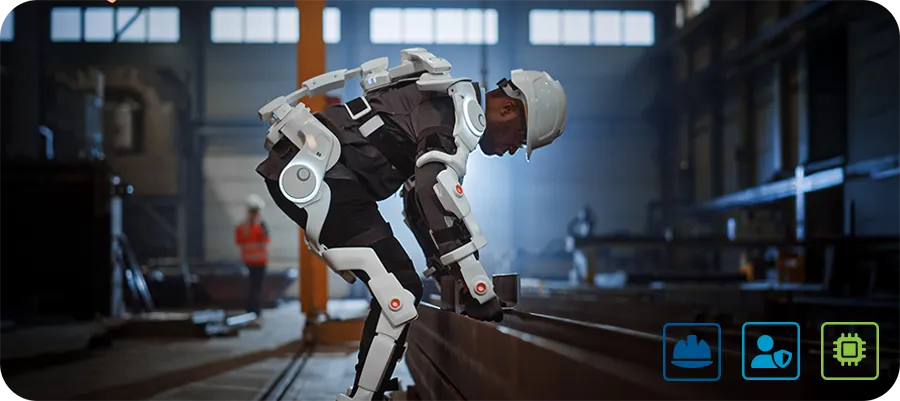
Home Blog Safety Meets Tech The Evolution of Wearable Safety Devices By Luke Hillenbrand Facebook Twitter LinkedIn Workplace safety is evolving. Technology is changing the game. Wearable devices are at the forefront, combining tech and practicality. They protect workers, enhance efficiency, and reduce risks. From smart helmets to biometric sensors, these tools are transforming high-risk environments. Companies investing in them build safer, more productive futures, improving both employee welfare and operational success. With each advancement, these devices demonstrate their potential to reshape workplace safety for good. A Brief History of Wearable Safety Devices Wearable safety isn’t new. For decades, workers relied on helmets, gloves, and goggles to stay safe. Technology changed that. Early alarm systems, like vibration alerts in mining helmets, warned of dangers such as collapsing shafts or unstable terrain. These innovations paved the way for today’s advanced devices. With sensors, GPS, and real-time data, modern wearables are more than protective gear—they are integral tools for workplace safety. From alerting workers in hazardous zones to collecting data that informs long-term safety strategies, wearables have come a long way. The journey from basic alerts to predictive analytics highlights a growing commitment to reducing risks and safeguarding lives. Types of Wearable Safety Devices Modern wearables tackle specific hazards with precision and adaptability: Smart Helmets Equipped with AR (augmented reality), these helmets detect gas leaks and structural hazards. They provide instant alerts and facilitate communication on job sites. Some models integrate thermal imaging to detect hidden dangers, such as overheating machinery or fire risks. Enhanced sensors now enable predictive maintenance, flagging potential failures before they occur. Biometric Sensors These devices monitor vital signs like heart rate, hydration, and body temperature. Advanced models analyze stress levels and alert workers before fatigue sets in, preventing accidents caused by exhaustion. Sensors can now integrate with wearable patches that track hydration in real-time, offering on-the-spot health recommendations. Location Trackers GPS-powered trackers locate lone workers and ensure rapid response during emergencies. Geofencing features notify supervisors when workers enter restricted zones, reinforcing site protocols. New multi-network connectivity ensures these trackers remain operational even in remote locations. Exoskeletons Designed to support lifting tasks, exoskeletons reduce strain and prevent musculoskeletal injuries. They enhance physical endurance, allowing workers to perform repetitive tasks safely. Some models are now powered by AI, adapting to users’ movements for optimized support. Smart Glasses AR overlays provide hands-free access to instructions and safety checklists. These glasses improve precision and reduce downtime by streamlining workflows. Advanced glasses include voice control and facial recognition, enabling rapid identification of team members and secure data sharing. Environmental Monitors These devices detect airborne hazards, such as toxic gases or particulates, ensuring real-time protection in industries like mining and chemical manufacturing. Newer versions now combine weather sensors, giving additional insights into changing conditions that could pose risks. Key Takeaways Wearables are shifting safety from reactive to proactive. Real-time data and predictive analytics let teams prevent accidents—not just respond to them. The best PPE is now smart. From AR helmets to biometric sensors, wearable tech is redefining what it means to be protected on the job. Tech-driven safety boosts more than just compliance. Companies that invest in wearables see gains in productivity, cost savings, and employee morale. The future of safety is connected, personalized, and always on. Smart wearables are evolving into essential tools for creating safer, smarter work environments. Industries Leading the Adoption of Wearable Technology Industries with high risks are leading the way in wearable adoption. Their focus on safety and efficiency makes wearables indispensable tools: Construction Smart helmets and trackers improve site safety, aiding navigation through busy or hazardous areas. By providing real-time updates, they reduce the chance of accidents. Wearables also integrate with project management software, enhancing coordination and efficiency. Oil and Gas Biometric sensors and gas detectors protect workers from harmful exposures. Wearables also ensure compliance with safety standards in environments where stakes are high. Some systems now include drone connectivity, combining aerial surveillance with wearable monitoring. Manufacturing Exoskeletons reduce physical strain, while smart glasses streamline precision tasks. These technologies improve productivity while cutting down on workplace injuries. Collaborative robots (cobots) now pair with wearables for seamless workflows. Healthcare Wearables track stress and fatigue during long shifts, protecting healthcare professionals in high-pressure environments. Devices like wearable ECG monitors safeguard their health while improving patient care. Integration with telehealth platforms ensures that real-time data supports decision-making. Mining Monitors and trackers enhance safety in remote and hazardous locations. Advanced systems ensure miners can be located and rescued swiftly in emergencies. Combined with underground communication networks, these tools ensure 24/7 connectivity in challenging conditions. Benefits of Wearable Safety Technology 1. Real-Time Monitoring Continuous data collection allows for instant responses, preventing accidents before they occur. Live dashboards centralize this data, providing supervisors with actionable insights. 2. Enhanced Compliance Automated tracking simplifies adherence to safety protocols, reducing manual errors. Regulatory updates can be pushed directly to wearables, ensuring workers remain informed. 3. Improved Productivity Ergonomic support minimizes injuries and fatigue, boosting worker efficiency. Wearables also streamline workflows, allowing workers to focus on tasks without interruptions. 4. Cost Savings Preventing incidents and reducing downtime saves businesses significant expenses. Predictive analytics further reduce costs by flagging issues before they escalate. 5. Data-Driven Insights Wearables generate actionable data, enabling companies to optimize safety measures and predict risks. Advanced algorithms now analyze data trends to improve forecasting. 6. Employee Engagement Workers feel safer and more valued when equipped with cutting-edge safety gear, fostering a positive workplace culture. Gamified safety metrics on wearables further encourage compliance and proactive behavior. Challenges and Considerations Privacy and security remain key concerns. Companies must safeguard data with encryption, restricted access, and regular audits. Transparent policies help build employee trust, ensuring they understand how their data is used. Training is also essential to ensure smooth integration. Wearables must balance functionality with comfort, ensuring employees adopt them willingly. Companies must also address device interoperability to integrate wearables seamlessly with existing systems. The Future of Wearable Safety Devices Wearables will only get better. Advances
Make Your Incident Data Work For You
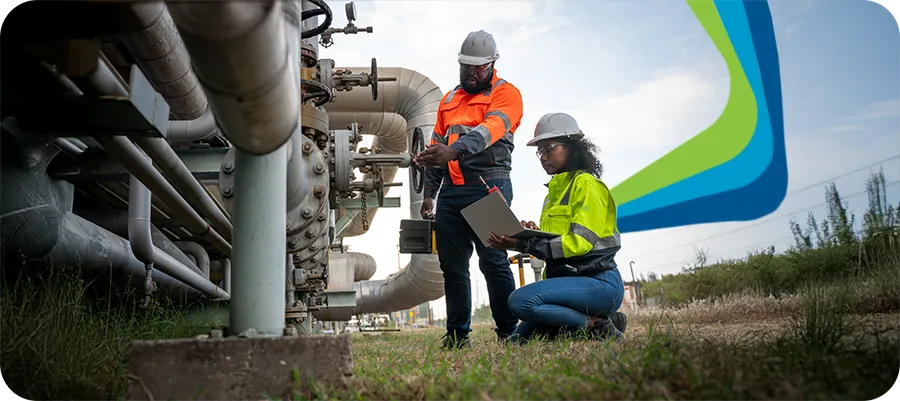
Home Blog Make Your Incident Data Work For You Turn Numbers into Actionable Insights By Luke Hillenbrand Facebook Twitter LinkedIn Every workplace safety program generates incident data, but not all organizations know how to make the most of it. Incident reports, near-miss logs, and safety observations provide more than just numbers—they reveal patterns, highlight risks, and offer a roadmap for improvement. The challenge lies in translating this raw data into clear, actionable insights that drive meaningful change. Without the right strategies, data can remain an untapped resource, leaving organizations reactive instead of proactive. This guide explores how to analyze incident data effectively, identify trends, and use those insights to enhance workplace safety. Why Incident Data Matters Incident data isn’t just a record of what’s gone wrong—it’s a tool for understanding the “why” behind workplace risks. Every report contains valuable information about hazards, behaviors, and system failures that contribute to incidents. When analyzed effectively, this data helps organizations: Identify Patterns Highlight recurring risks and pinpoint high-risk areas, equipment, or processes. Drive Preventive Measures Use trends to implement targeted safety improvements before incidents escalate. Support Compliance Provide documentation that demonstrates a proactive approach to safety during audits. Boost Accountability Show clear links between safety initiatives and outcomes, reinforcing a culture of responsibility. By leveraging incident data, safety managers can shift from reacting to problems to preventing them entirely. Step 1: Collect Consistent, High-Quality Data The foundation of actionable insights is reliable data. Inconsistent or incomplete incident reporting undermines your ability to draw meaningful conclusions. Best Practices for Data Collection Standardized Reporting Forms Ensure every incident report includes key details such as date, time, location, individuals involved, and a clear description of the event. Encourage Near-Miss Reporting Near-misses are early warning signs of potential hazards. Make it easy and non-punitive for employees to report them. Use Mobile Tools Digital reporting systems streamline data collection and reduce errors compared to paper-based processes. Case Study: A logistics company implemented a mobile app for near-miss reporting. Within six months, reports increased by 40%, uncovering trends related to poorly marked loading zones. Addressing these issues reduced incidents by 25% the following quarter. Step 2: Centralize and Organize Your Data Scattered data creates blind spots. Consolidating all incident reports, safety observations, and inspection logs into a centralized system ensures nothing slips through the cracks. How to Centralize Effectively Use Safety Management Software Platforms designed for workplace safety consolidate data into a single dashboard, making it easy to analyze trends. Tag and Categorize Data Organize reports by type, location, equipment, or contributing factors to identify recurring issues. Integrate With Existing Systems Ensure your safety software connects with HR, maintenance, and compliance platforms to provide a comprehensive view. Pro Tip: Regularly review your data for completeness and consistency. Missing or inaccurate information can skew results and lead to flawed conclusions. Step 3: Analyze for Patterns and Trends Once your data is centralized, the next step is to identify patterns that point to underlying risks. Look for clusters of similar incidents or recurring hazards across locations. What to Look For Recurring Equipment Failures Are specific machines or tools involved in multiple incidents? Time-Based Trends Do incidents spike during certain shifts or seasons? Location-Specific Risks Are certain areas of your facility more prone to hazards? Example in Action: A manufacturing plant noticed a pattern of injuries involving workers replacing conveyor belts during peak shifts. The analysis revealed that time pressures led to shortcuts in safety procedures. By scheduling maintenance during slower periods and providing additional training, the company reduced injuries by 30%. Step 4: Translate Insights Into Actionable Changes Data is only as valuable as the actions it inspires. Once trends are identified, use them to implement targeted improvements. Strategies for Acting on Insights Revise Policies Update safety protocols to address identified risks, such as enhanced procedures for high-risk tasks. Targeted Training Provide specific training sessions based on the most common incident types or contributing factors. Engineering Controls Modify equipment, tools, or workspaces to eliminate hazards entirely. Case Study: A construction company analyzed incident reports and found that ladder-related falls were a recurring issue. They introduced new ladder inspection protocols, provided hands-on training, and replaced aging equipment. The result? A 50% decrease in ladder-related injuries within a year. Step 5: Share Insights With Your Team Transparency is key to fostering a safety-first culture. Sharing insights from incident data helps employees understand risks and reinforces their role in creating a safer workplace. How to Communicate Effectively Visual Dashboards Use charts, graphs, and heatmaps to make data easy to understand. Regular Safety Meetings Discuss trends and progress during team huddles or monthly safety reviews. Highlight Successes Celebrate reductions in incidents or near-misses to keep morale high and motivate continued participation. Pro Tip: Frame discussions around “how we can improve” rather than assigning blame. A solutions-focused approach encourages openness and collaboration. Step 6: Monitor and Measure Results Implementing changes is only part of the process. Continuously monitoring outcomes ensures your actions are effective and helps refine your approach over time. Metrics to Track Incident Reduction Are reported incidents decreasing after implementing changes? Employee Engagement Are workers participating more actively in reporting and training? Audit Performance Has compliance improved during inspections or audits? Example in Action: After a healthcare facility introduced monthly safety meetings and revamped reporting protocols, they saw a 20% reduction in patient-handling injuries within six months. Tracking these metrics highlighted the direct impact of their efforts. How Technology Enhances the Process Modern safety management software is an invaluable tool for turning data into actionable insights. Automation and analytics features simplify every step of the process, from data collection to trend analysis. Key Features to Look For Real-Time Reporting Capture incidents and near-misses instantly with mobile tools. Automated Analytics Generate reports that highlight patterns and trends without manual effort. Customizable Dashboards Visualize data in a way that’s meaningful to your organization’s goals. Pro Tip: Choose software that integrates seamlessly with existing systems, ensuring all relevant data flows into a single platform. The Bottom
Top 10 Red Flags in Safety Audits

Home Blog Top 10 Red Flags in Safety Audits How to Avoid Them By Dinesh Kumar Facebook Twitter LinkedIn Safety audits are essential for ensuring workplace compliance and protecting employees. They bring to light the weak points in a safety program and provide actionable insights for improvement. However, common issues can derail audits, leading to penalties, operational disruptions, or worse—preventable incidents. Avoiding these pitfalls doesn’t require perfection. It requires preparation, follow-through, and attention to detail. Here are ten common red flags auditors encounter and practical ways to address them. 1. Disorganized or Missing Documentation The Issue: Incident reports, inspection logs, or training records are incomplete, outdated, or hard to locate. Why It Matters: Documentation is the backbone of safety compliance. Gaps in records raise questions about whether processes are being followed consistently. How to Address It: Store all safety-related documents in a centralized system, whether digital or physical. Automate reminders for updates to keep records current and ensure they’re easily accessible during an audit. 2. Training Records That Don’t Measure Up The Issue: Employees have incomplete or outdated safety training records, including missed refresher courses. Why It Matters: Training equips workers with the knowledge to manage risks effectively. Inadequate records suggest that critical skills and safety protocols may not be properly reinforced. How to Address It: Use a Learning Management System (LMS) to track training participation and completion. Schedule refresher courses at regular intervals and focus on high-risk roles to ensure readiness across the workforce. Key Takeaways Safety audits reveal your culture—not just your compliance. Messy records and repeat hazards tell a story. Make sure it’s the right one. Proactive systems prevent red flags. From training logs to maintenance checks, automation and structure are your best friends. Leadership sets the tone. When safety isn’t a top-down priority, it shows—and so do the risks. Follow-through is everything. A strong audit isn’t just about finding issues—it’s about proving you’re fixing them. 3. Incomplete Equipment Maintenance Logs The Issue: Maintenance records for machinery or equipment are inconsistent or nonexistent. Why It Matters: Poorly maintained equipment increases the likelihood of accidents and signals a lack of proactive risk management. How to Address It: Implement a maintenance tracking system to log inspections and repairs. Set up automated reminders for routine checks to prevent lapses and ensure that every piece of equipment is safe to operate. 4. Lack of Reporting for Near-Misses The Issue: Near-miss incidents are rarely reported or poorly documented. Why It Matters: Near-misses provide a critical opportunity to address hazards before they escalate into injuries. A lack of reporting indicates potential blind spotsin risk identification. How to Address It: Create a non-punitive reporting system that makes it easy for employees to flag near-misses. Mobile tools or simple forms can streamline the process and encourage participation. 5. PPE Non-Compliance The Issue: Employees are either not wearing or improperly using personal protective equipment (PPE). Why It Matters: Consistent PPE usage is fundamental to workplace safety. Visible lapses undermine compliance efforts and put workers at unnecessary risk. How to Address It: Conduct regular safety observations to verify PPE use and reinforce training on proper practices. Signage in high-risk areas can also serve as a visual reminder. 6. Emergency Plans That Are Outdated or Unpracticed The Issue: Emergency response plans are outdated, incomplete, or haven’t been tested with drills. Why It Matters: An unclear or untested plan can lead to confusion during emergencies, putting workers and operations at greater risk. How to Address It: Review and update emergency plans annually. Conduct drills to test preparedness and ensure employees understand their roles and responsibilities during a crisis. 7. Hazards That Keep Reappearing The Issue: Recurring issues identified in previous audits remain unresolved. Why It Matters: Repeated hazards suggest a lack of accountability and undermine trust in the safety program. How to Address It: Treat audit findings as action items with clear deadlines and responsibilities. Regularly track progress to ensure corrective actions are completed and prevent recurring issues. 8. Disengaged Leadership The Issue: Managers and leadership are absent from safety initiatives or minimally involved in audits. Why It Matters: Leadership involvement is critical for reinforcing a culture of safety. A lack of engagement sends a message that safety isn’t a priority. How to Address It: Involve leaders in safety meetings, audits, and training sessions. Make safety metrics a regular part of leadership reviews to keep it on the agenda and emphasize its importance. 9. Poor Communication of Safety Updates The Issue: Safety updates, protocols, or audit findings aren’t consistently shared with employees. Why It Matters: Gaps in communication lead to confusion, reduced compliance, and repeated issues that could have been avoided with better transparency. How to Address It: Develop a clear communication strategy for all safety updates. Use multiple channels like email, team meetings, and digital dashboards to ensure every employee stays informed. Safety software can track acknowledgment to verify employees receive critical information. 10. Neglected Audit Follow-Ups The Issue: Recommendations from previous audits are not implemented or tracked. Why It Matters: Ignoring audit findings demonstrates a lack of commitment to improving safety processes and creates repeated vulnerabilities. How to Address It: Turn audit recommendations into actionable plans. Assign accountability for each task, set deadlines, and track progress until every item is resolved. How Safety Software Helps You Stay Ahead Preparing for audits doesn’t have to be an overwhelming task. Safety management software simplifies the process by automating key compliance requirements and centralizing data. Key Features to Look For: Centralized Dashboards: Consolidate all safety data for quick access during audits. Automated Alerts: Stay on top of training, inspections, and maintenance schedules. Audit-Ready Reporting: Generate detailed reports that meet compliance standards with minimal effort. The Bottom Line: Audit Preparation Simplified Safety audits are opportunities to demonstrate your organization’s dedication to protecting employees and maintaining compliance. Avoiding common red flags requires consistent follow-through, organized documentation, and proactive leadership. By addressing these issues and leveraging the right tools, you can streamline the audit process, improve safety outcomes, and build a culture
Shortcuts Kill
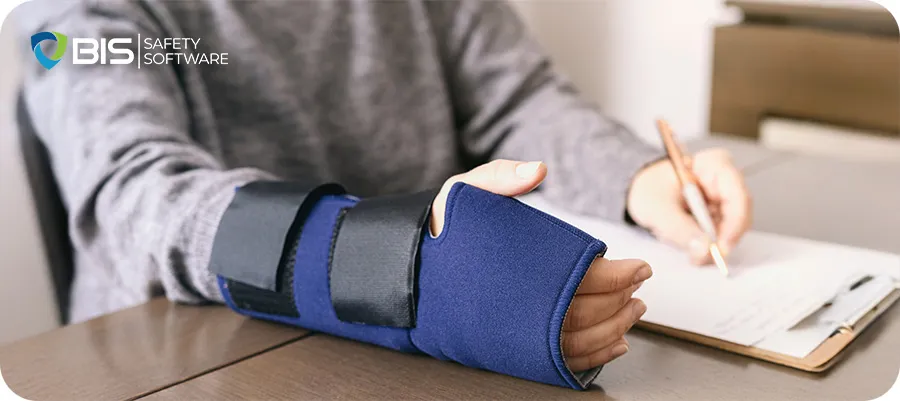
Home Blog Shortcuts Kill The Hidden Cost of Rushing Through Safety By Luke Hillenbrand Facebook Twitter LinkedIn Shortcuts save time—until they don’t. A missing hard hat. A skipped lockout. A harness left unclipped. One bad decision can change everything. Workers take risks when they think nothing will go wrong. Until it does. And when it does, it’s fast. Sudden. Unforgiving. One moment of carelessness can lead to an injury, a shutdown, or a life-changing disaster. The Danger of Cutting Corners Rushing feels efficient. Deadlines press. Supervisors push for speed. But cutting corners doesn’t just shave minutes—it adds risk. Skipping safety steps turns small hazards into major injuries. The more often workers take shortcuts, the more comfortable they get with risk. They stop seeing the danger. Until it’s too late. A missed PPE check – One forgotten glove leads to a lost finger. A rushed equipment inspection – A worn cable snaps under pressure. Ignoring proper lifting technique – A split-second strain causes years of back pain. Skipping lockout/tagout – A machine restarts with someone still inside. Rushing through confined space protocols – One bad reading, and toxic gases take a life. Shortcuts threaten everyone. They cost companies millions in lost productivity, compensation claims, and lawsuits. A rushed job today can shut down a whole operation tomorrow. And when tragedy strikes, it’s not about money. It’s about lives changed forever. Families devastated. Reputations ruined. Why Workers Take Risks Pressure to Perform – Speed over safety. When deadlines loom, safety steps feel like obstacles. Overconfidence – Workers trust experience over protocol. They think they know better—until they don’t. Bad Habits – Cutting corners becomes routine. The more it happens, the more normal it seems. Lack of Accountability – If no one enforces safety, workers assume it doesn’t matter. Peer Influence – If everyone else skips steps, new workers follow suit. Fatigue and Stress – Tired workers make poor decisions. The exhausted brain values speed over caution. The Ripple Effect of One Shortcut A single shortcut spreads. A rushed inspection today leads to faulty equipment tomorrow. A minor slip-up turns into a major incident. One unsafe act signals to others that safety is flexible. It erodes the entire safety culture, bit by bit, until disaster is inevitable. Related read: Do you own a business in the insurance industry? Check out how Artificial Intelligence is transforming the insurance industry. How to Stop the Shortcut Mindset Safety isn’t a box to check. It’s a mindset. A culture. Here’s how to stop the “just this once” mentality before it turns deadly: Slow Down – Safety takes seconds. Recovery takes months. Reinforce that no deadline is worth an injury. Reinforce Training – Keep safety top-of-mind with regular refreshers. Make it stick with real-world examples. Encourage Reporting – If workers see shortcuts happening, they should speak up—without fear of punishment. Hold Everyone Accountable – From the top down, safety is non-negotiable. No exceptions. Reward Safe Behavior – Recognize workers who take the time to do things right. Reinforce that safety matters more than speed. Use Real Consequences – Don’t just warn about risks. Show examples. Videos. Stories. Accidents that could have been prevented. Supervisors Must Lead – Leaders who enforce shortcuts set a dangerous precedent. Safety starts at the top. The Bottom Line A shortcut isn’t just a time-saver. It’s a risk multiplier. One bad decision can cost a life. The safest worker isn’t the fastest—it’s the one who makes it home. Every. Single. Day. Because safety isn’t about slowing work down. It’s about making sure work never stops because of an avoidable tragedy. BIS Social Media Follow BIS Safety Software for industry-leading safety updates, training solutions, and more. Hover over each icon for quick access to follow, share, or explore our other channels. Facebook Instagram Linkedin Youtube Related Articles All Posts 360 Immersive Alberta safety courses Allan James Moore awareness BambooHR integration biometric sensors BIS Podcast BIS Safety Software black holes Brave Leadership chemical chronic injuries Coming Soon community safety programs Compliance compliance courses compliance tools compliance vs protection Construction advocacy Construction education Construction industry construction safety training crane customized training daily trip inspection Danny Sellers data-driven safety digital forms Dr. Joanna Pagonis driver file management driver training early intervention EHS Einstein emergency preparedness emergency supplies employee health employee safety employee training ergonomics exoskeletons fall protection field safety field safety services fire prevention first aid kit first week on the job fleet management frontline safety gravitational waves hands-on training hazard communication hazard prevention Health & Safety Podcast heavy equipment safety high voltage systems HR automation HR software humor in safety Imposter Syndrome incident data incident reporting industrial safety injury prevention injury reporting injury response internal audits Jennifer Lastra job site hazards job site risks job site safety Jody Young KBR Safety Training Leadership leadership accountability leadership and empathy LIGO LMS lone workers mental health at work MI Safety new workers Northern BC NRCA NSC Standard 13 occupational health occupational safety oil and gas safety onboarding safety Online safety training OSHA compliance OSHA standards overhead crane courses pain awareness physics careers pipeline safety podcast PPE PPE enforcement pre-trip inspection pretrip inspection Professional development psychological safety risk management road safety Robin Postnikoff safety safety advice safety article safety best practices safety communication safety compliance Safety Conversations safety culture safety innovation safety insights safety inspection Safety Leaders safety leadership safety management safety management system safety metrics safety myths safety podcast Safety Spotlight safety systems safety technology safety theater safety tips safety training Sinogap Solutions smart helmets space science supervisor training Total Recordable Injury Formula training training courses training matrix training record management transportation Trust and Accountability vehicle safety Virtual Reality VR Technology wearable technology WHMIS women in leadership work-alone training worker accountability worker protection worker safety workforce management workforce training workplace best practices workplace certification Workplace Culture workplace hazards workplace health workplace injury prevention workplace risk management Workplace safety workplace safety culture workplace wellness WSPS Party Crashing the Safety Status Quo: Allan James Moore on Redefining Safety Leadership April


